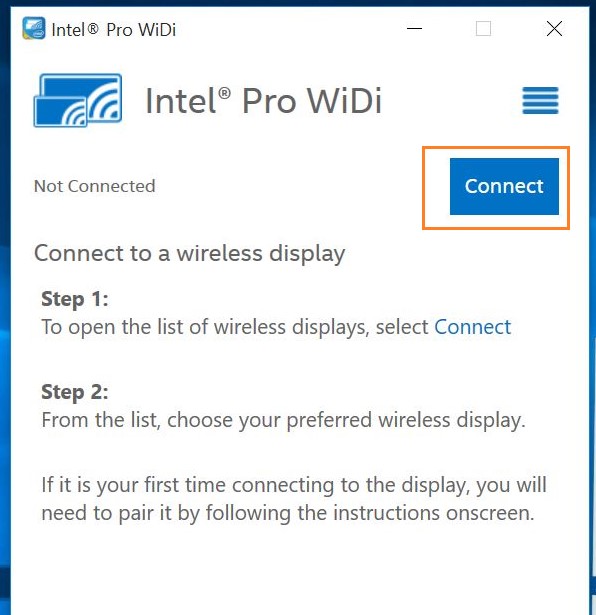

Quick tip: You can use the Windows key + A keyboard shortcut, or you can click the Action Center icon in the far right of the taskbar.Ĭlick the device you want to project the screen. To project your screen to another computer on Windows 10, use these steps: Once you complete the steps, the Connect app will open to accept mirroring connections from another computer. Click the arrow button in the titble bar, next to the left of the minimize button, to enter in full-screen mode.Search for Connect and click the top result to open the app. Use the "Require PIN for pairing" drop-down menu and select the Never option. Use the "Ask to project to this PC" drop-down menu and select the Every time a connection is required option.Use the "Some Windows and Android devices can project to this PC when you say it's OK" drop-down menu and select the Always Off option.Quick tip: If you see a red message saying: This device doesn't support Miracast, so you can't project to it wirelessly, then it means that you can't use this feature. To enable "Project to this PC" feature on the device you want to convert into a wireless display, use these steps:

If you're looking to screen mirroring on Windows 10, you'll need a source and destination device supporting Miracast technology connected to the same network, and you will need to follow some specific steps.
#TOSHIBA WIDI WINDOWS 10 HOW TO#
How to use PC as a secondary wireless display In this Windows 10 guide, we'll walk you through the steps to use another device as a wireless display with the screen mirroring feature built into the system. Whatever the reason it might be, you can use the "Project to this PC" settings along with the "Connect" app to turn a Windows 10 computer into a wireless display without the need for extra hardware or software.


 0 kommentar(er)
0 kommentar(er)
